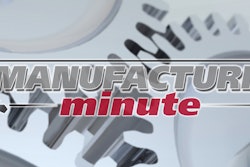Recently, food safety crises have been in the spotlight more frequently. As a result, consumers have higher expectations for food quality and safety. To learn more about who consumers trust and where they place responsibility for ensuring food safety, supply chain transparency software provider Trace One checked in with consumers on the street. To learn about how important ingredients and knowing where food is sourced from is to consumers, our first set of interviews can be found here.
Despite attempts to avoid food safety scares, issues continue to arise. Here’s what consumers had to say about their trust in brands and their food safety expectations:
What makes you not trust a food brand?
With all the food safety recalls and concerns about internal processes, consumers are thinking twice about the brands they know and trust. They want assurances that the products they buy are safe for their families to eat, and they want to know that materials and ingredients used are sourced from reputable suppliers. Trace One’s recent consumer survey revealed that only 11 percent of American consumers wholeheartedly trust the safety of the food they consume and only 8 percent wholeheartedly trust the quality. These shockingly low numbers show food retailers and manufacturers that they need to do more to build trust for their brands.
Ultimately, what these consumers are demanding is more transparency in what really goes into the food they are consuming. Vague or false labeling was cited as a reason consumers do not trust food brands. Efficient communication and documentation from farm to fork makes it easier to be transparent with consumers and provide accurate, detailed information.
Today’s consumers are more health conscience than ever before. One of the consumers interviewed said they like to see brands make progress in eliminating unhealthy ingredients from their food. A hot topic in the industry is the GMO debate and whether GMOs have an impact on health. Some consumers would argue that while GMOs do not have a severe effect on human safety, they do feel like it impacts their overall health and would rather know that they are consuming them from the labeling itself.
Who do you think is responsible for making your food safe?
Food supply chains are becoming more global and complex, and consumers are somewhat aware of the complicated food networks that ultimately bring food to their plate. Consumers are the greatest, yet most vulnerable within this network, and while ultimately every stakeholder holds responsibility, many consumers see it a different way.
In Trace One’s recent survey, when asked who is the most responsible for food quality and safety, 84 percent said food retailers and manufacturers. In other words, if a food crisis were to occur, these consumers would put the blame on food manufacturers and retailers regardless of who is actually at fault. What does this mean for food retailers and manufacturers? It is crucial to maintain efficient communication and documentation of all transactions throughout the manufacturing process so, if a crisis were to happen, manufacturers and retailers can take swift action to pinpoint the contamination, move appropriate products off shelves and alert consumers with as much detail as possible.
In the event of a food recall, companies lose more than consumer trust. The average cost of a food recall can reach up to $1 million – not counting any significant damage or loss of human life. One of the most effective practices to pinpoint and contain food safety crises is to adopt the right technology that can support the entire food supply chain. Knowing exactly what, where and to what extent a contaminant has occurred in matter of minutes, or hours, can greatly reduce response time so manufacturers and retailers can focus on rectifying the issue and minimizing damage.






















